Artist: Gerard Dillon RHA RUA (1916-1971) Title: The Wonderful Farm Machine Signature: signed lower right Medium: mixed media on board Size: 56 x 76½cm (22 x 30.1in) Framed Size: 74.2 x 95cm (29.2 x 37.4in) Provenance: James Adam's, Dublin, 30th May 2012 lot 4; James Adam's, Dublin, 27th March 2019 lot 47; Private Collection Exhibited: Dawson Gallery, Dublin 1969, No.11 a#morebtn { color: #de1d01; } a#morebtn:hover { cursor: pointer;} A humorous and quasi-Surrealist painting, employing collage and mixed media on board, The Wonderful Farm Machine depicts two Pierrot figures dancing in a field of corn, celebrating the arrival of a new agricultural machine. Although looking like a Jean Tinguely sculpture, the machine in Dillon's pai... Read more Gerard Dillon Lot 26 - 'The Wonderful Farm Machine' Estimate: €10,000 - €15,000 A humorous and quasi-Surrealist painting, employing collage and mixed media on board, The Wonderful Farm Machine depicts two Pierrot figures dancing in a field of corn, celebrating the arrival of a new agricultural machine. Although looking like a Jean Tinguely sculpture, the machine in Dillon's painting, silhouetted in black, is based fairly closely on a silage harvester. Painted probably in 1960, The Wonderful Farm Machine is one of a series in which Dillon explores the motif of Pierrot, the circus clown-like figure that originated in the traditional Italian theatre 'Commedia dell Arte', but served also as an alter-ego for the artist himself. The masked Pierrots in this painting are zany and animated, dancing and jumping in front of the machine as it advances across the field. In these paintings, Dillon explored his own uncertainties and sense of isolation from society. In order to avoid condemnation, throughout his life he concealed his homosexuality. Living in London enabled him, to some extent, to develop emotional relationships, but while in Ireland, he kept his personal life private and so was able to enjoy a relatively happy social life. Leaving school at the age of fourteen, Dillon initially trained as a house painter. While studying to become a full-time artist, he also worked in the building trade to earn a living. Although he did not attend art college, his work was championed, particularly by his fellow-artist Mainie Jellett. During the 1930s and '40s, Dillon lived for extended periods in London, but he spent the war years in Dublin where, in 1942, Jellett opened his first exhibition. Dillon's friendships with artists such as Daniel O'Neill George Campbell and Nano Reid were important to him, and in the 1950s he enjoyed a considerable degree of success, showing at the Waddington and Leicester galleries and in 1963 having a one-person show at the Whitechapel Art Gallery. He represented Ireland at the Guggenheim International in 1958 and that same year, notwithstanding his Irish nationalist sympathies, represented Great Britain at the Pittsburgh International. He travelled in Europe and taught for brief periods in London. In 1968 he was in Dublin, designing sets and costumes for Sean O'Casey's play Juno and the Paycock. He died prematurely three years later, of the congenital heart condition that had already claimed the life of his three brothers. Peter Murray, November 2021
Artist: Gerard Dillon RHA RUA (1916-1971) Title: The Wonderful Farm Machine Signature: signed lower right Medium: mixed media on board Size: 56 x 76½cm (22 x 30.1in) Framed Size: 74.2 x 95cm (29.2 x 37.4in) Provenance: James Adam's, Dublin, 30th May 2012 lot 4; James Adam's, Dublin, 27th March 2019 lot 47; Private Collection Exhibited: Dawson Gallery, Dublin 1969, No.11 a#morebtn { color: #de1d01; } a#morebtn:hover { cursor: pointer;} A humorous and quasi-Surrealist painting, employing collage and mixed media on board, The Wonderful Farm Machine depicts two Pierrot figures dancing in a field of corn, celebrating the arrival of a new agricultural machine. Although looking like a Jean Tinguely sculpture, the machine in Dillon's pai... Read more Gerard Dillon Lot 26 - 'The Wonderful Farm Machine' Estimate: €10,000 - €15,000 A humorous and quasi-Surrealist painting, employing collage and mixed media on board, The Wonderful Farm Machine depicts two Pierrot figures dancing in a field of corn, celebrating the arrival of a new agricultural machine. Although looking like a Jean Tinguely sculpture, the machine in Dillon's painting, silhouetted in black, is based fairly closely on a silage harvester. Painted probably in 1960, The Wonderful Farm Machine is one of a series in which Dillon explores the motif of Pierrot, the circus clown-like figure that originated in the traditional Italian theatre 'Commedia dell Arte', but served also as an alter-ego for the artist himself. The masked Pierrots in this painting are zany and animated, dancing and jumping in front of the machine as it advances across the field. In these paintings, Dillon explored his own uncertainties and sense of isolation from society. In order to avoid condemnation, throughout his life he concealed his homosexuality. Living in London enabled him, to some extent, to develop emotional relationships, but while in Ireland, he kept his personal life private and so was able to enjoy a relatively happy social life. Leaving school at the age of fourteen, Dillon initially trained as a house painter. While studying to become a full-time artist, he also worked in the building trade to earn a living. Although he did not attend art college, his work was championed, particularly by his fellow-artist Mainie Jellett. During the 1930s and '40s, Dillon lived for extended periods in London, but he spent the war years in Dublin where, in 1942, Jellett opened his first exhibition. Dillon's friendships with artists such as Daniel O'Neill George Campbell and Nano Reid were important to him, and in the 1950s he enjoyed a considerable degree of success, showing at the Waddington and Leicester galleries and in 1963 having a one-person show at the Whitechapel Art Gallery. He represented Ireland at the Guggenheim International in 1958 and that same year, notwithstanding his Irish nationalist sympathies, represented Great Britain at the Pittsburgh International. He travelled in Europe and taught for brief periods in London. In 1968 he was in Dublin, designing sets and costumes for Sean O'Casey's play Juno and the Paycock. He died prematurely three years later, of the congenital heart condition that had already claimed the life of his three brothers. Peter Murray, November 2021
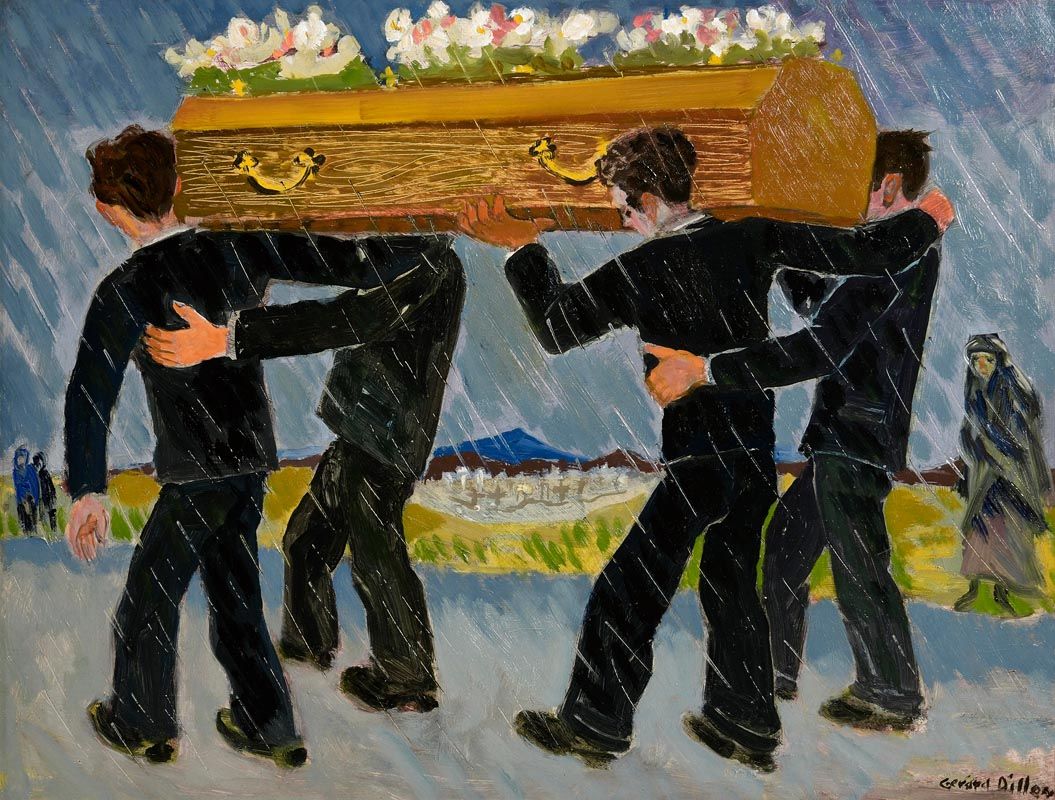
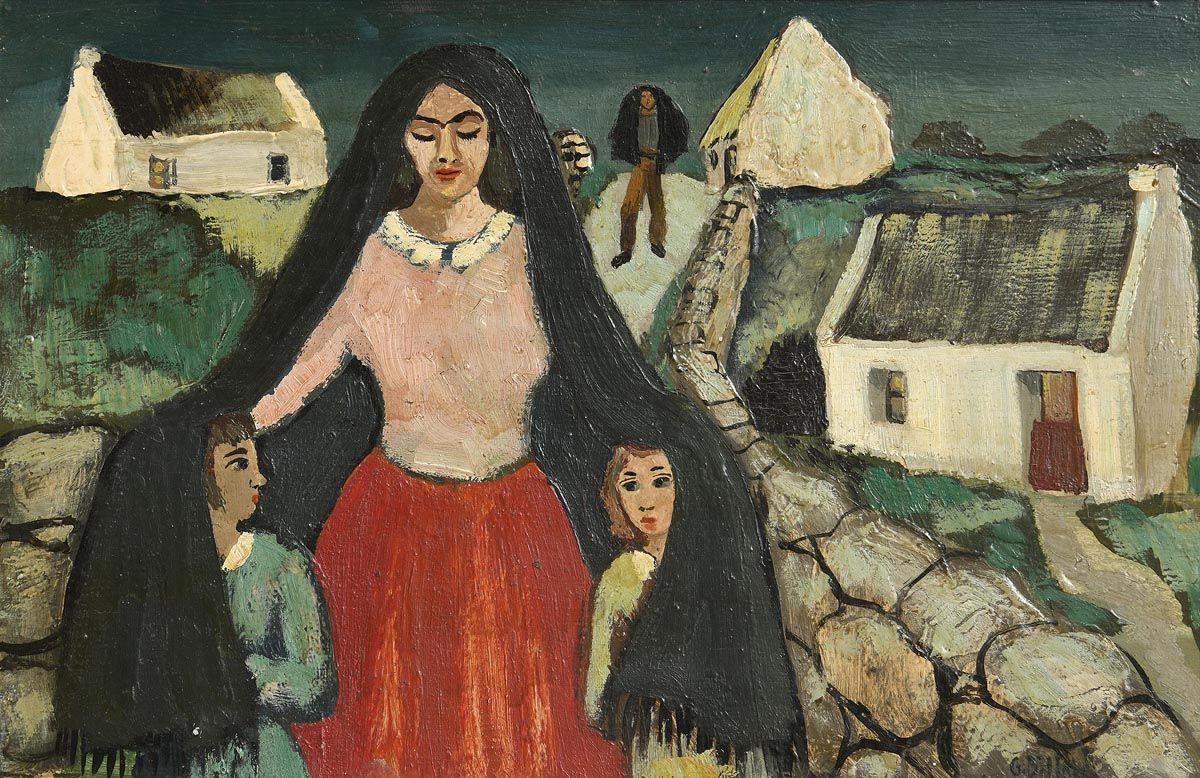
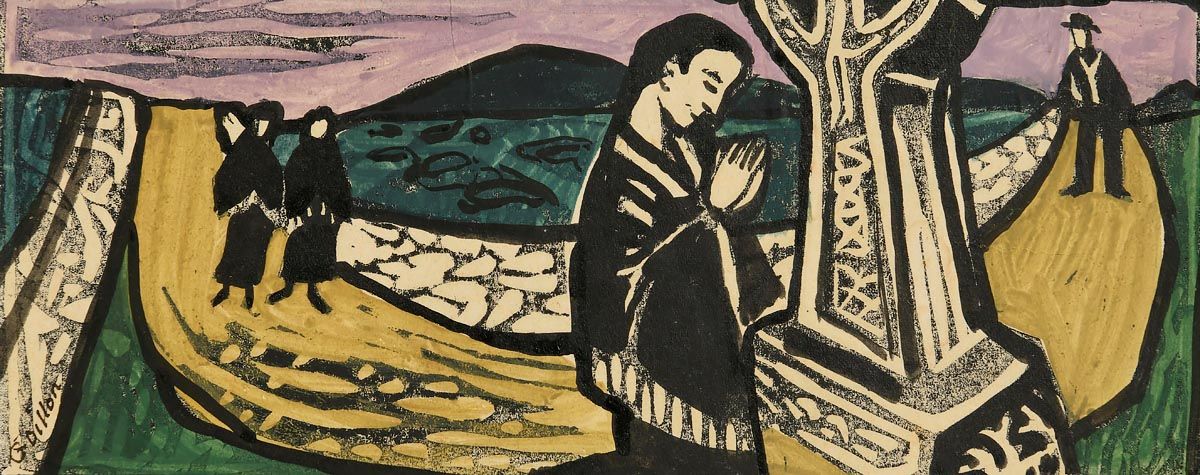

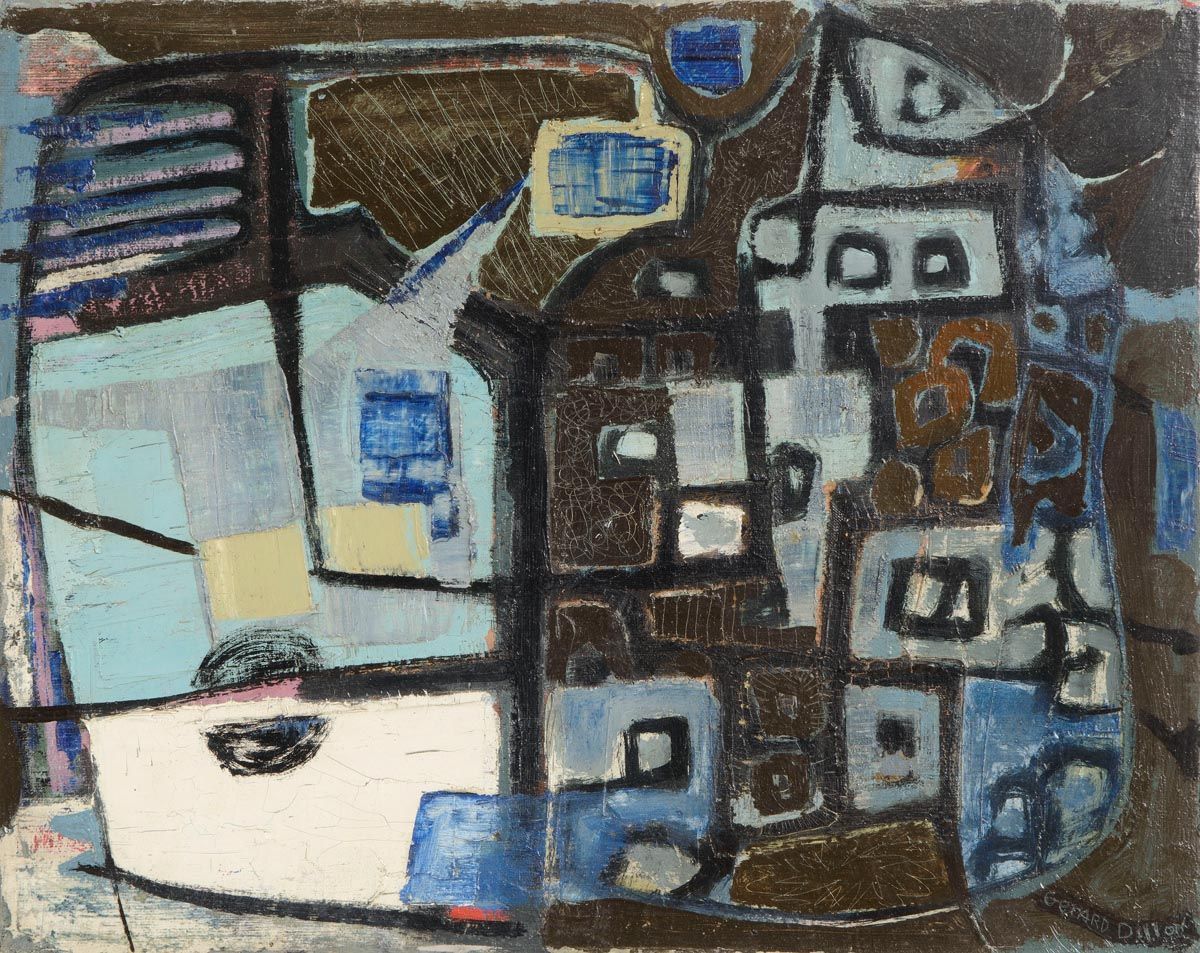
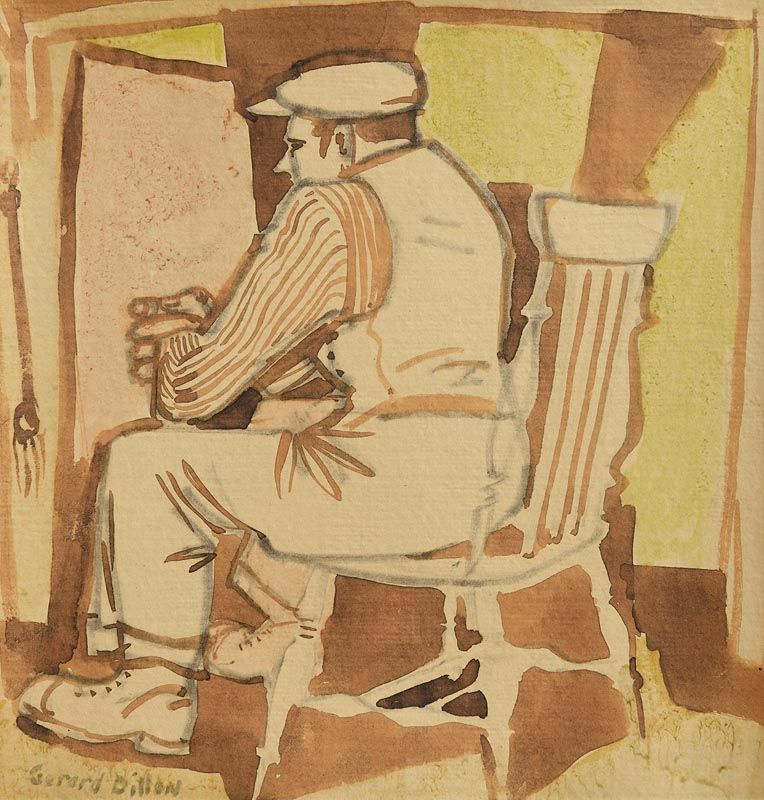

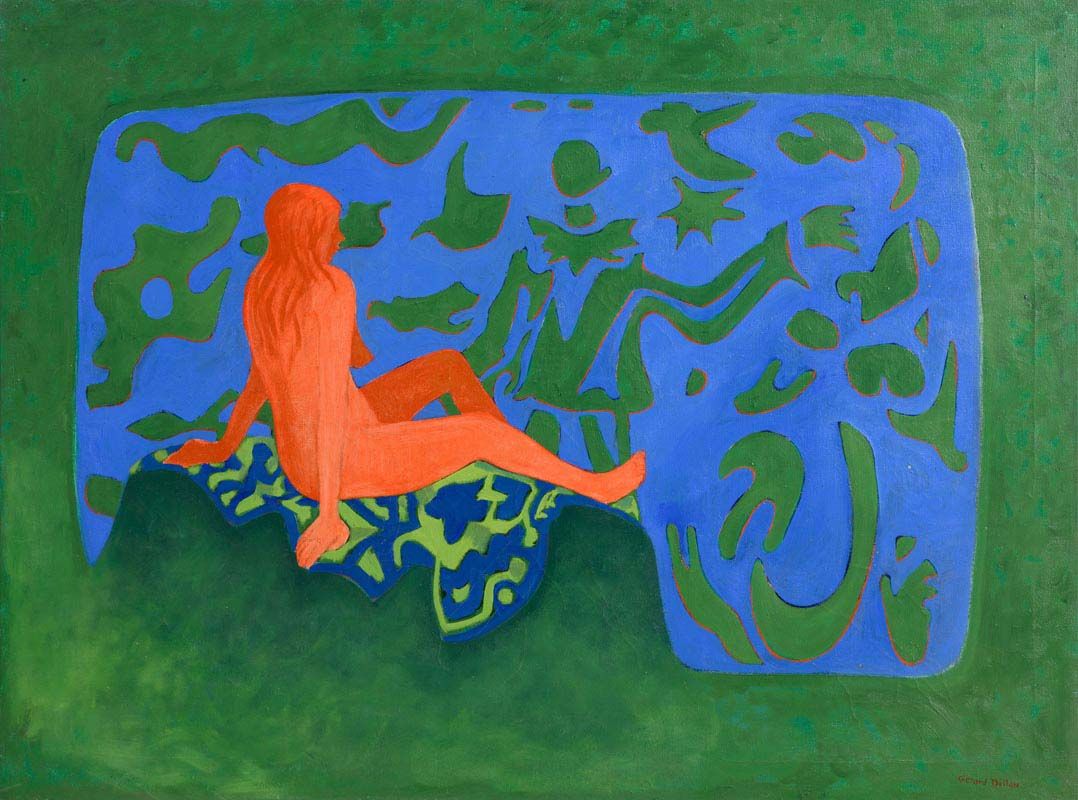
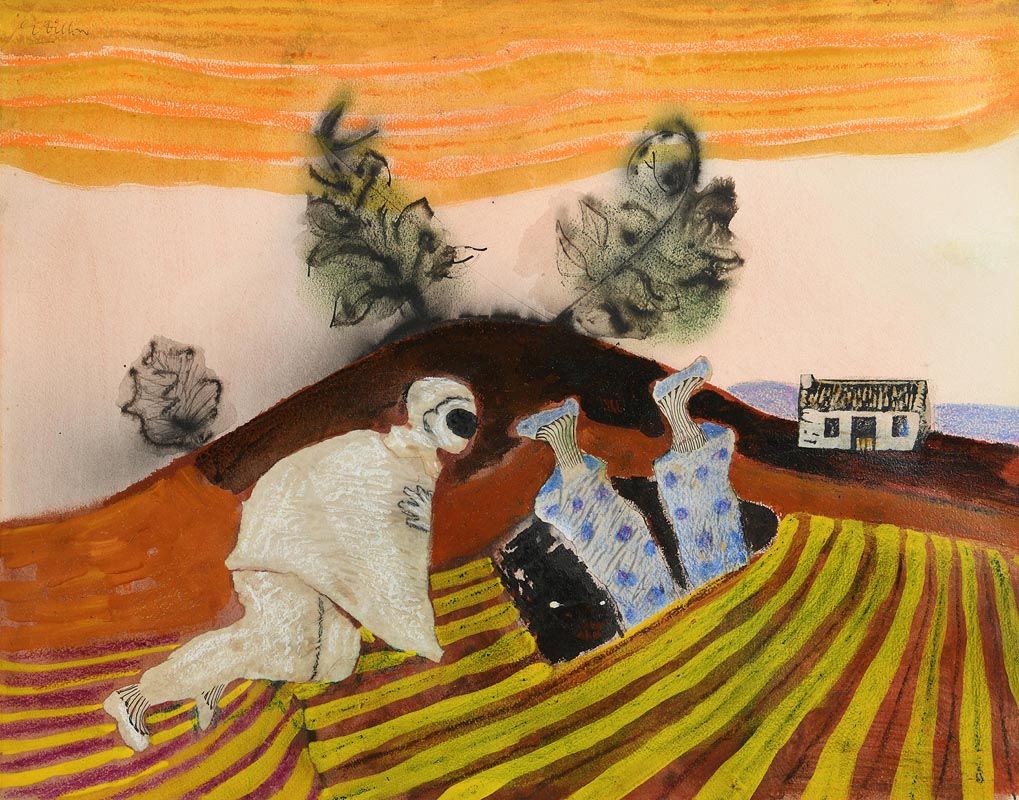

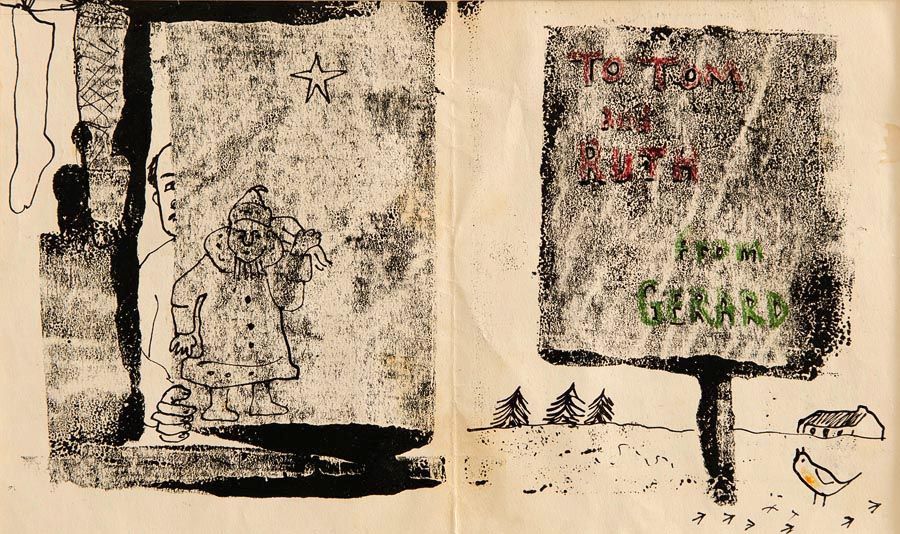
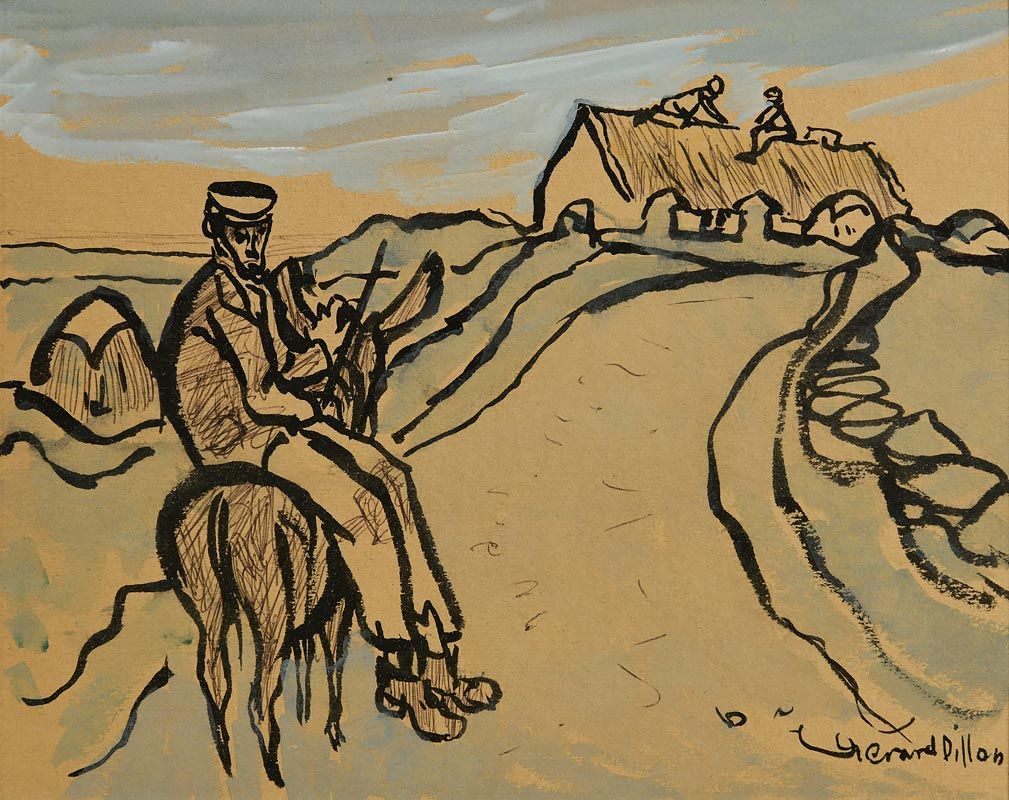
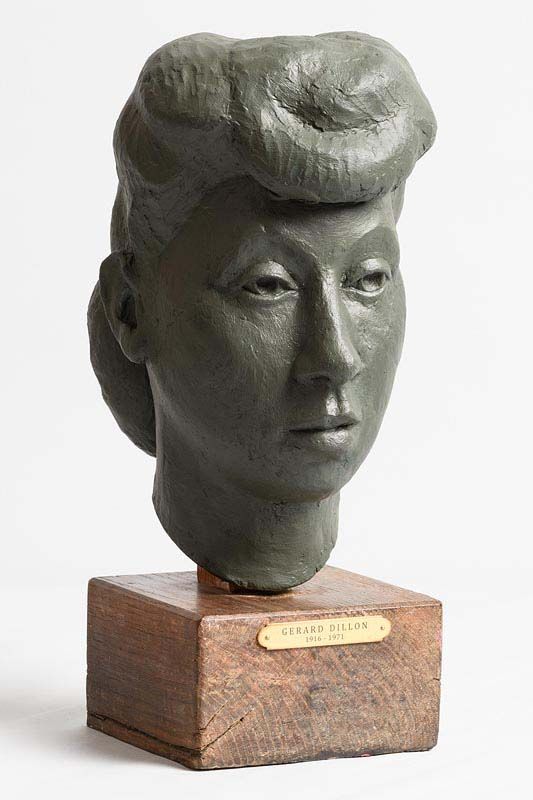
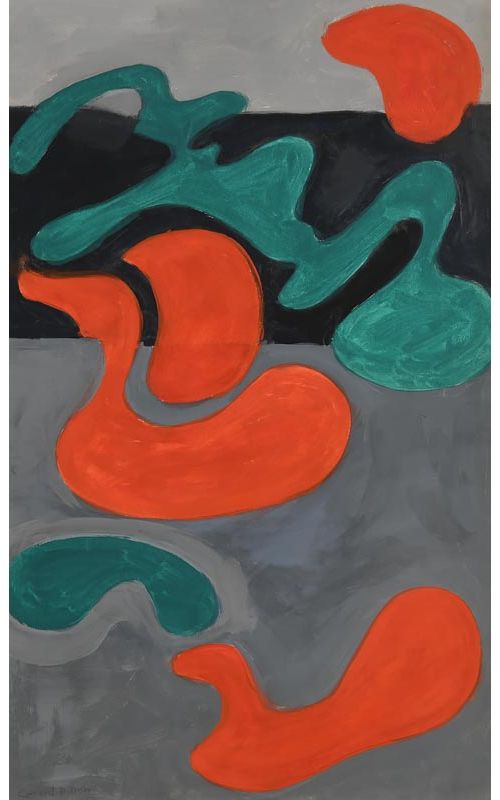

Testen Sie LotSearch und seine Premium-Features 7 Tage - ohne Kosten!
Lassen Sie sich automatisch über neue Objekte in kommenden Auktionen benachrichtigen.
Suchauftrag anlegen